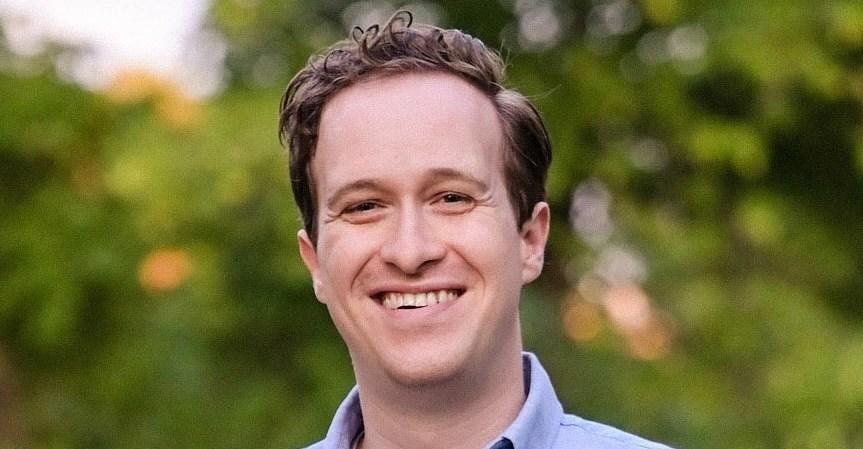Solving the congenital syphilis crisis means investing in rural maternity care.


In mid-July, in the basement of Monument Health’s flagship hospital in Rapid City, South Dakota, neonatologist Kimberly Balay searches her phone for a photograph. The image is of a slide from a presentation she makes often, but wishes she didn’t have to: a graph that shows her hospital’s congenital syphilis cases rocketing up over just the past three years.
In 2018, Balay’s neonatal intensive care unit (NICU) saw its first case in 10 years. Then, it saw four cases a year in 2019 and 2020. Afterward, the curve shoots skyward. In 2021, there were 19 cases; in 2022, 32. “We pretty much constantly had somebody in our NICU” with the infection, she says.
As medical director of one of only three NICUs in South Dakota, Balay knew this had to represent a much bigger problem. She talked about it to anyone who would listen — namely, other health care providers, city officials, tribal decision-makers. “People were always just like, yeah, I can’t believe that — syphilis? No, we got rid of that. And I’m like, no, no, it’s here. It’s in South Dakota. It’s affecting my babies,” she said.
Until the early 2010s, women only rarely got infected with syphilis. But in 2012, women’s infection rates began to tick upward, and rose more than 700 percent across the US according to estimates from the Centers for Disease Control and Prevention (CDC).
At the same time, congenital syphilis cases — in-utero infections that have high rates of disability and death — also began to lurch out of control throughout the US. Transmission has been particularly intense in South Dakota. Last year, the state had the highest rate of sexually transmitted syphilis infections, and the seventh highest congenital syphilis rate.
Nationally, infections in both adults and infants have increased faster in Native Americans than in any other racial or ethnic group, especially over the course of the pandemic — a trend also mirrored in South Dakota. But the concentration of cases in this group “has nothing to do with the color of their skin or their race,” said Balay. “It’s a disease of access.”
Many providers like Balay see an obvious link between rising congenital syphilis rates and sparse access to obstetric care (i.e., care for pregnant people, also called maternity or prenatal care). That’s largely because, historically, prenatal care is where syphilis transmission to a fetus has been interrupted. Testing is standard in prenatal care, and all but eight states require syphilis testing during pregnancy.
The problem is simple, as Balay explains. “There just is not enough obstetric care,” she said. And as prenatal care becomes increasingly scarce, so do opportunities to catch and treat syphilis.
Balay is not alone in thinking that scarcity helps explain what’s happening with congenital syphilis, especially among Indigenous Americans.
In a recent CDC report, 37 percent of US babies with syphilis were born to parents who didn’t get timely syphilis testing during pregnancy. But that number was higher, 47 percent, when the parents were American Indian. And most of those parents who didn’t get timely testing didn’t get any prenatal care at all.
In rural states, increasingly inadequate maternity care access is making intensified mother-to-child syphilis transmission all but inevitable. That puts Indigenous women and their newborns at especially high risk.
Why maternal care access is worse for Indigenous mothers
All pregnant people in rural areas are at a geographical disadvantage when it comes to getting care. About a quarter of rural obstetric units have closed since 2011. According to a 2022 March of Dimes report on maternity care deserts — US counties without adequate obstetric providers or birth centers — two out of every three such deserts are rural.
Twenty-two percent of Indigenous Americans live in rural areas, a higher proportion than any other racial or ethnic group. However, Indigenous Americans’ access to maternity care is often worse than that of other rural residents. In a study conducted by researchers at the University of South Carolina’s Rural and Minority Health Research Center, rural Indigenous communities were farther from hospital-based obstetric units than any other rural communities. Additionally, more than half were at least 30 miles away from the nearest obstetric unit. (Although prenatal care often happens outside a hospital setting, providers are most likely to practice near an obstetric unit.)
Amplifying that disadvantage is the fact rural Indigenous people are less likely to own a vehicle than other rural Americans, and are twice as likely to be carless as their white peers.
Transportation is an immense and persistent problem for people trying to access prenatal care at the Kyle Health Center on the Pine Ridge reservation, said Dayle Knutson, a registered nurse who is the Indian Health Service’s (IHS) chief nurse officer for the Great Plains area. The reservation is vast, covering about 2.1 million acres of land; Kyle is about 50 miles from the big IHS hospital in Pine Ridge. The clinic has a full-time midwife who provides obstetric care. However, many patients can’t physically get to the clinic due to a lack of transportation.
The risk to South Dakota’s mothers is concentrated in its rural areas, and especially on its reservations in the western part of the state. The March of Dimes defines a broad swath of counties statewide as maternity care deserts. However, as can be seen in the below map, women in the western part of the state, especially those in counties containing reservations, travel further to get care, partly due to less well-developed road systems.
:no_upscale()/cdn.vox-cdn.com/uploads/chorus_asset/file/25178719/Screenshot_2023_12_21_at_8.42.17_AM.png)
Although being able to physically access a prenatal care provider is an obvious barrier to getting prenatal care, another more subtle obstacle may also affect Indigenous Americans more than others. Substance use disorders have caused disproportionate misery in America’s Indigenous communities, and many US states criminalize drug use during pregnancy. This leads many of the women who’d most benefit from prenatal care to avoid it.
How sparse maternal care creates the conditions for syphilis
South Dakota offers a case study in how sparse maternal care creates challenges to stopping a congenital syphilis outbreak.
The state lost many of its rural labor and delivery sites decades ago, as decreasing numbers of births in these areas meant these sites weren’t making enough money to stay open, said Shelly Ten Napel, CEO of the Community HealthCare Association of the Dakotas, a nonprofit organization representing primary care providers. “It’s just really hard to sustain [labor and delivery services] at a high quality level if you don’t have the volume,” said Ten Napel.
At the same time, obstetric care became highly specialized, making it harder for the family care practitioners who used to deliver babies to stay up-to-date on current practices. As a result, many of these providers dropped pregnancy care from their repertoires.
The Affordable Care Act’s Medicaid expansion in 2010 made it easier for rural hospitals to stay open. But a lot of South Dakota’s hospital closures happened before its passage.
In her office across town from Balay’s NICU, OB-GYN Rochelle Christensen said the dearth of providers means her “patients drive three hours for their prenatal care sometimes.” There are now no labor and delivery services between the midpoint of the state and the hospital where she delivers babies in Rapid City, near the western edge of the state.
Many Indigenous patients in the western part of the state used to get free obstetric care at IHS sites, located on or near reservations. (Free care was guaranteed to Indigenous people as a treaty right to compensate for centuries-old injustices.) But plagued by underfunding and difficulty recruiting providers, IHS facilities have progressively closed many of their childbirth services. In testimony provided during a 2021 federal inquiry into South Dakota’s Indigenous maternal mortality crisis, tribal members described low standards of care in IHS maternity services, and closures or funding changes at IHS facilities that have forced local women to drive hundreds of miles to get routine prenatal care. Overall, according to reporting in USA Today, only nine IHS facilities in six states offered childbirth services as of summer 2022.
Instead of going to IHS facilities, patients from reservations often come to Rapid City, said Balay, to get their prenatal care from a certified nurse midwife at the tribally owned Oyate Health Center. But those providers are now themselves overloaded: In July, CDC epidemiologists investigating the state’s syphilis outbreak noted the health center’s two midwives were together caring for more than 200 patients, a heavy burden.
At the end of the CDC’s two-week investigation, its team presented their findings to more than 130 tribal and state public health staff. Among the most important drivers of the state’s syphilis outbreak were the scarcity of maternal health care and the lack of transportation, said the presenters.
To overcome these barriers, the Kyle Health Center on the Pine Ridge Reservation employs public health nurses who see patients in their home or at their workplaces — “wherever they agree to” — for visits at least three times during their pregnancy, said Knutson. And just a few months ago, IHS implemented policies that permit those nurses to provide syphilis treatment with penicillin in the field. But even for them, it’s sometimes challenging to locate patients’ homes on the vast reservation.
What could help solve the maternal care crisis — and what stands in the way
One of the most promising solutions to South Dakota’s maternal care scarcity problem got a boost last year when the state’s voters approved an initiative to expand Medicaid beginning in early 2023. The expansion means more than 52,000 of the state’s residents are newly insured, which shifts the costs of their care from IHS to a better-funded federal program. It also means that hospitals caring for these patients will get paid more for the care they provide to the thousands of tribal residents newly covered by Medicaid. And most importantly to patients, expansion will make it more financially feasible to get the care they need.
All of that is good for improving IHS’s solvency because it increases what it recoups from insurance payments, said Ten Napel, which could eventually lead to broader maternity care availability in Indian Country.
While the birth rate is relatively low in most of the state, it is high on many of its reservations because their populations skew younger. If pregnant people are insured by Medicaid and they get care at IHS before, during, and after they give birth, IHS can collect payment from Medicaid for their care — which amounts to better compensation than IHS would receive from the federal government for uninsured patients.
Compared with health facilities in other parts of the state with lower birth rates, facilities in South Dakota’s Indian Country stand to earn more from the maternity care they already provide. And those earnings would allow IHS to invest in providing even more maternity care.
Still, other state policies may make it difficult to reexpand the state’s rural prenatal care availability. When the constitutional right to abortion was overturned nationally last June, South Dakota’s trigger law banning abortion took effect immediately afterward. These types of laws threaten to widen maternity care deserts, said Tracey Wilkinson, a pediatrician who specializes in reproductive health issues at Indiana University’s medical school, by scaring away providers who fear being unable to practice the full scope of medical care. “We are seeing the experts in maternity care, such as OB-GYN and maternal-fetal medicine doctors, leave — they’re just leaving states,” she said.
According to reporting by nonprofit news outlet South Dakota Searchlight, many of the state’s pregnancy care providers feel trapped by the law, and newly trained OB-GYNs say the restrictions have led them to reconsider establishing practices in the state.
OB-GYN Heather Spies, whose Sioux Falls practice is in the eastern part of South Dakota, pushed back against that idea, and said providers can work within the boundaries of the law to provide necessary care to pregnant people. So far, she said, she hasn’t seen anyone stop practicing in the state because of the restrictions. It’s as yet unclear what effects these changes will have on the state’s prenatal care deserts. And it also remains to be seen how improvement in care will impact syphilis transmission.
Tribes could mount a bigger response — but face roadblocks
During debt ceiling negotiations earlier this year, Congress slashed the last two years of a five-year grant that supports state disease intervention specialists. These employees are responsible for the bulk of South Dakota’s syphilis contact tracing, and defunding their work may mean less outbreak control, and more syphilis spread.
Tribes themselves could play an important role in containing syphilis outbreaks on reservations. But they’re not able to because for years, the state has declined to tell tribal public health authorities who in their communities needs treatment and contact tracing.
There’s some hope in this regard: A state health department representative told Vox in December that the agency is in the process of negotiating a data-sharing agreement with tribal public health leadership. If this happens, tribes could potentially help transport pregnant people from remote areas to get testing and treatment, or could treat them in their homes, and could design programs to track and stop chains of transmission within tribal communities.
Balay has other ideas for how South Dakota could address both maternal care scarcity and the need to stop syphilis spread: Mobile units, for example, could provide much-needed prenatal care and treatment for pregnant people with syphilis in the most isolated areas of the state. Support for that “could come from, I don’t know, a state with a surplus of $96.8 million this year,” she said, referring to an Instagram post by Gov. Kristi Noem, which boasted of the surplus earlier this year.
Whatever the details, urgently finding a solution aligns with both the priorities Balay feels the state should have, and the priorities its leaders says it has. “We are a state that prides itself on small government. However, the purpose of government is to protect its citizens,” she said.
“We are a very pro-life state. This is a life-and-death matter.”
This story was reported as part of an Association of Health Care Journalists fellowship, supported by the Commonwealth Fund.

AI ‘creators’ might just crash the influencer economy
- 8 hours ago

OpenAI says it’s disabled ad-like app promotions in ChatGPT
- 8 hours ago

Govt does not believe in using NAB for political vendetta: PM Shehbaz
- 16 hours ago

Analogue is restocking its 4K N64 and making it more colorful
- 8 hours ago

How the Supreme Court is using Trump to grab more power for itself
- 6 hours ago

Betting scandals broke sports. Could prediction markets do the same to politics?
- 6 hours ago

Traditional gender roles won’t get men what they want
- 6 hours ago

Manafaingana ny famonjenan’ireo tanalahy mampalaza an’i Madagasikara ireo manam-pahaizana satria efa mitatao ny afo.
- 6 hours ago

Skateboarding is better in hell
- 8 hours ago

The Verge subscription turns one
- 8 hours ago

President confers Nishan-e-Pakistan on Indonesian President
- 14 hours ago

Genki’s colorful, powerful power strip is 25 percent off
- 8 hours ago





